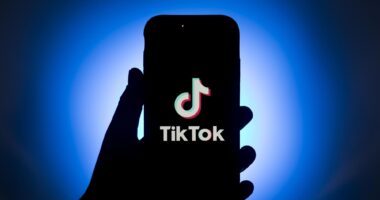
Opinions expressed by Entrepreneur contributors are their own.
Over the course of my career, I’ve taught thousands of people, both in higher-ed settings and in corporate environments. Something I struggled with, especially when working with many learners at once, was providing personalized instruction and feedback equitably, and on a large scale.
Think about it: we all benefit from personalized attention. I know that whether I’m showing a student how to code or showing an employee how to implement a new tool, learners will better comprehend and retain the information when it’s tailored to their needs. But what we want to do (and know we should do) as educators is often in conflict with what we can do. It’s difficult for one teacher to give individualized guidance and attention to all their learners — especially when you have more than 100 students per class, lecture-hall style.
I found that learners who spoke up by asking and answering questions got more of my personalized attention. I would also use assessments to gauge knowledge gaps and invite students who were struggling to my office hours for extra help (or schedule one-on-one time with employees). I wasn’t covering everyone, but I felt like I was doing the best humanly possible.
Today, artificial intelligence (AI) has the ability to go beyond what humans can do. Far from being a futuristic technology, AI is here — and improving business processes and outcomes across many industries. Why not learning, too?
As someone who’s deeply immersed in the field of learning, and having gone from teaching to serving as founder and CEO of a learning platform company, I see great potential for how AI can make life easier for trainers and learners alike. It can personalize learning journeys, content recommendations and more. I wish I’d had it to supplement my efforts back in my teaching days.
Here are some benefits of AI — both here and on the horizon — that HR leaders (and training programs at large) will be able to benefit from:
1. Eliminating onerous and error-prone processes
Got learning data you need to crunch? Chances are, you do, and the amount of data can somteimes feel like a tsunami. For humans, it’s easy to feel inundated, but AI can process information instantly — detecting patterns with far greater speed and accuracy.
To that end, you can use AI to:
- Interpret learning data. It can be difficult for people to interpret data that’s spit out in a monster spreadsheet or unintuitive report. Plus, crunching numbers isn’t something many trainers want to do. AI makes it easier to decipher what data says about learning performance.
- Determine knowledge gaps or “holes” at the individual level or across the workforce.
- Identify learning best practices among high achievers.
Related: 5 Ways AI Is Changing the Face of Learning
2. Recommending next best actions
Let’s say a learner finishes a self-paced course, demonstrating competency. What should be the next item on their to-do list, based on their learning history, goals, aptitudes and interests? (I would have loved to be able to tell my learners this, at scale!)
So time-permitting, a trainer might provide recommendations. Or perhaps the company’s learning management system has a set of nested “if-then” rules that an administrator entered manually. At a basic level: IF a learner is on a certain path and scores above a 90% in a specific course, THEN show a certain predetermined resource next.
Going a step further, AI algorithms, which get smarter the more data they’re fed, can deliver recommendations to individual learners instantly and dynamically — whether to take another course, watch a video, speak with a subject matter expert, participate in a Q&A, etc. And recommendations aren’t just derived from what the employee has already done – they can be based on what the person wants to do. What competencies do they want to develop? What role are they working toward?
3. Serving up learning, Netflix-style
This was the holy grail for me, as an educator: large-scale learning personalization.
Many of us are familiar with the power of personalization in our personal lives — whether that’s getting recommendations from Netflix, Amazon or other vendors about items likely to interest us, based on our previous consumption patterns and activities of others like us. The recommendations I get are different, of course, than what’s served up to my wife and my friends.
Similarly, learning doesn’t follow a one-size-fits-all approach. AI can power much-needed personalization with recommendations that cover not only next steps and individual content items, but an employee’s entire learning journey.
This eliminates tedium for learners (e.g. “If I’ve already shown mastery in a certain skill, why the drudgery of having to take a course on it, just because everyone else is?”), gives learners more practice in areas they struggle in and helps employers unlock each person’s engagement and maximum potential. Not to mention, in our largely remote world today, personalization also helps simulate an in-person, one-on-one type of learning experience.
Related: Learn How Machine Learning Can Help Your Business
If benefits like these have swayed you, and you’re looking to incorporate AI in training, where do you start? Consider these tips:
- Take a crawl-walk-run approach. Introduce AI slowly in areas it makes sense. For example, start with onboarding, then move on to skills development.
- Have goal-setting sessions with employees to kick off learning journeys. What skills do they want to develop? What roles would they like to pursue? Once goals are in the learning system, AI can provide recommendations, next best actions and performance data to aid success.
- Combine artificial intelligence with human intelligence, empowering managers and trainers to give input into AI algorithms to enhance learning.
Despite the name, AI contributes to learning experiences that are anything but artificial and instead are more authentic. It can address challenges of the past — such as the struggle to provide personalized instruction at scale — and drive new opportunities and efficiencies, so that learning programs deliver the best possible outcomes.
This article is from Entrepreneur.com









